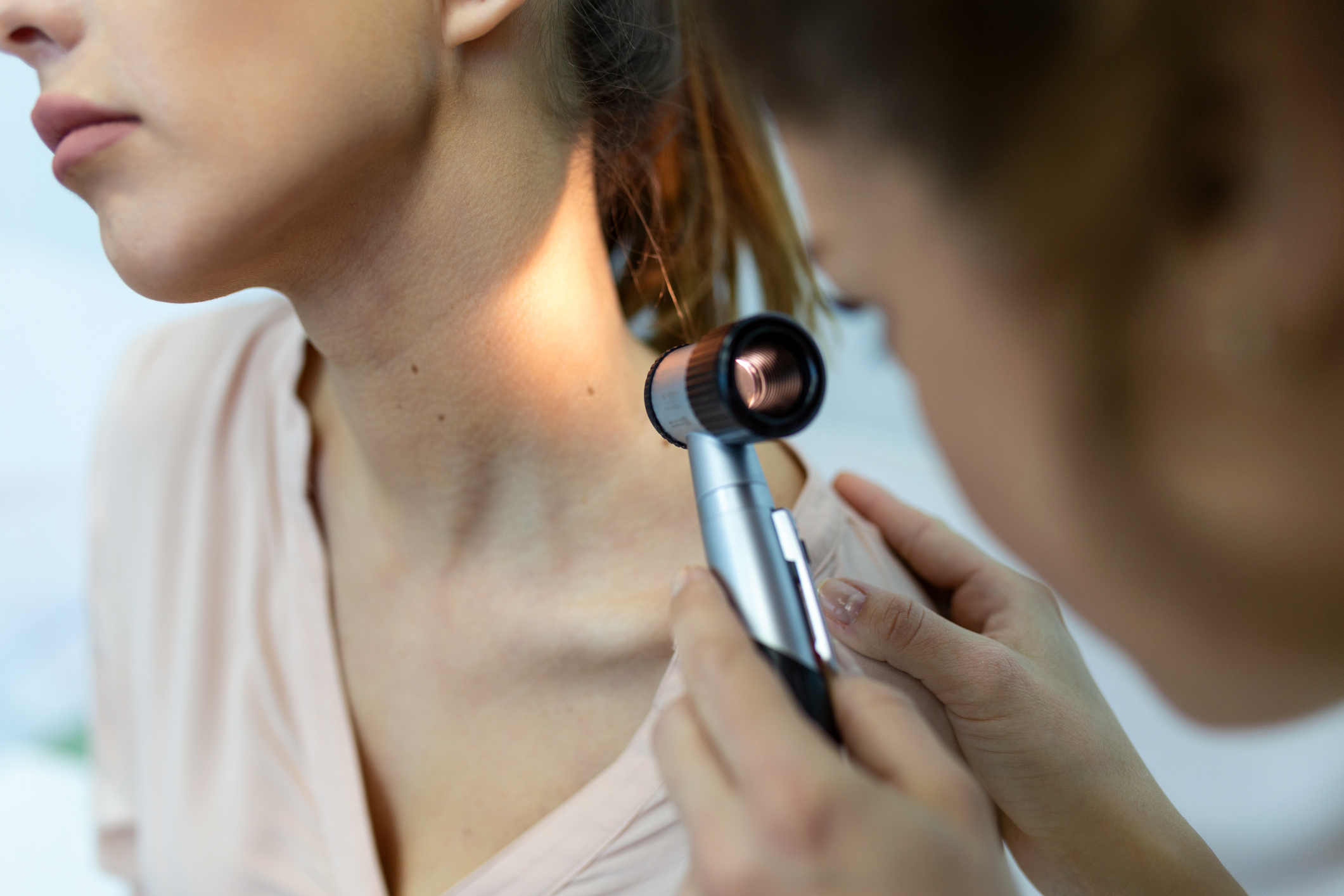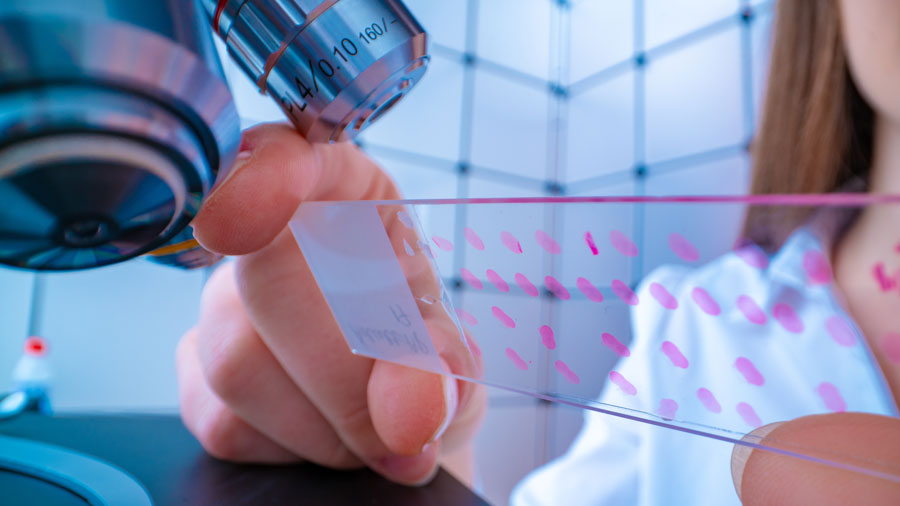Medical Dermatology
Skin Cancer Types
Basal Cell Carcinoma
Basal Cell Carcinoma is the most common type of skin cancer.
Squamous Cell Carcinoma (SCC)
Squamous Cell Carcinoma is the second most common type of skin cancer and typically develops on skin that has been exposed to the sun for many years such as the head, neck and back of the hands.
Melanoma
Melanoma is the most dangerous type of skin cancer. Performing skin self-exams can help you detect the following warning signs of melanoma in moles (ABCDEs):
- Asymmetry – one half does not look like the other half
- Border – irregular, scalloped, or poorly defined border
- Color – varied from one area to another, shades of tan and brown or black, sometimes white, red, or blue
- Diameter – typically greater than 6mm (the size of a pencil eraser)
- Evolving – a mole or lesion that looks different from the rest or is changing in size, shape or color, a mole that becomes painful or begins to bleed or itch
Melanoma begins on the surface of the skin, but if given time to grow, can grow down through the skin reaching the blood and lymphatic system, which can allow it to spread (metastasize) through the body. If allowed to metastasize, melanoma can be life-threatening. However, when detected early, melanoma is highly treatable.

Cancer vs. Benign Skin Surgery
Skin lesions are bumps that are found either on or just below your skin and look abnormal from the skin around them. Some examples of skin lesions are sebaceous cysts, lipomas, skin tags, and moles. The majority of skin lesions are non-cancerous (benign), but some may be a sign of something more serious.
Our dermatology medical professionals are experienced in providing high-quality in-office dermatologic evaluations and surgical procedures to help determine your best plan of care.

Medical Dermatology Treatments
-
Cryotherapy
-
Biopsy
-
Photodynamic Therapy
-
Cosmetic Removal of Unwanted Lesions

Skin Check
Full body skin exams are an important part of health maintenance. Skin cancers cause significant morbidity and mortality if not caught early. Most skin cancers are treatable if caught early. It is recommended everyone have a baseline full body skin exam to determine risk of skin cancer and to review good skin care habits.
The first thing that will happen during your skin exam is a review of your medical history.
A full-body skin exam typically takes about 10 minutes. You will need to remove your clothes to the level you are comfortable with and put on a medical exam gown.
Your Provider will thoroughly check your skin from head to toe, paying close attention to hard-to-see spots. They may utilize a small handheld magnifying device called a dermatoscope, that visualizes the outer surface of the skin and the layers just beneath it. If the Provider finds a concerning spot on your skin, a biopsy will likely be done that same day. A biopsy involves numbing the area with a local anesthetic, followed by a shaving, scraping or use of a punch tool to get deeper layers of skin of the spot. Results are communicated via phone within 10-14 days. If the spot is abnormal, it may require further removal.
During your skin check, your Provider will talk to you about your risk of skin cancer, as well as healthy skin habits, including sun avoidance and sun protection. They will also discuss with you when you need another skin exam, based on your personal history and the results of the skin exam.
Remember that early detection of skin cancer is the key to the most minimal and cost-effective treatment with the highest chance of a cure. Make your appointment soon!
Alastin Skincare
- SilkSHIELD® All Mineral Sunscreen SPF 30
- HydraTint Pro Mineral Broad Spectrum Sunscreen SPF 36 – with a hint of tint
EltaMD Skincare
- Elta MD UV Clear SPF 46 Very transparent and ultra-light. EltaMD #1 seller for men and teenagers!
- Elta MD UV Shield SPF 45 Slightly moisturizing, lightweight, oil free and transparent.
- Elta MD Physical UV SPF 41 Non-chemical sunscreen, tinted to help redness. Great for rosacea patients!
- Elta MD Sport SPF 50 Waterproof sunscreen for sports and swimming
Tizo Skincare
- TIZO3 Facial Primer Tinted SPF 40
- TIZO® AM Replenish Non-tinted SPF 40
- TIZO® AM Replenish Lightly Tinted SPF 40



